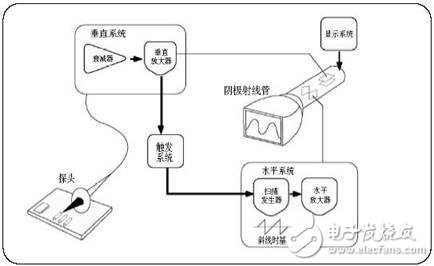In the 19th century Europe, the first train was left behind by a horse-drawn carriage. When the clock pointed to the 21st century, the speed of the high-speed rail has exceeded 400 kilometers, and the horses of that year can only see the racecourse and the zoo. Living in the face of Moore's Law, the year is constantly detonated, and any prosperity is only a small island in the face of the tide of the times. Yesterday, I still wanted to buy a horse bone for a thousand dollars. Today, I have already been cold-skinned in front of the door. The analog oscilloscope is like a horse-drawn carriage of the year. It is gradually fading out of the engineer's field of vision. On a certain day, he will finally leave us completely and become a page that will be turned over in the history of measuring instruments.
1. Once a generation of Xiongxiong
The earliest analog oscilloscopes appeared in the early 20th century, with a bandwidth of only a few MHz. This is the oscilloscope of the CRT display we saw earlier. The principle is relatively simple. It has been said in high school physics: the internal sawtooth wave signal is generated inside the analog oscilloscope to control the horizontal deflection of the silver-light electron gun. The measured voltage is amplified to control the vertical deflection of the fluorescent screen electron gun. In this way, the spot or bright line is clearly displayed on the screen, which is the waveform.

2, once pushed to the altar
When the digital oscilloscope was first introduced, many engineers did not trust it. They felt that the analog oscilloscope was a real-time oscilloscope, and the digital oscilloscope was not real-time. This is indeed the case, because the digital oscilloscope must first collect a piece of data into the cache, and then stop the acquisition, and then the latter processor takes the data in the cache and then interpolates, analyzes, measures, and displays. Especially before the 21st century, this data processing time is much longer than the time taken by the oscilloscope to acquire waveforms, that is to say, most of the waveforms are missed (the English literature refers to "dead TIme", which is the dead time). Analog oscilloscopes can display voltage changes in real time with sufficient bandwidth, which plays a crucial role in the development of oscilloscopes.

3, hard wounds are destined to be abandoned by the times
The advantages of the analog oscilloscope need not be described in detail, the real-time performance is good, the principle is simple, and the price is cheap. But the instrument principle itself also contains the flaws that will eventually be abandoned by the times. There are probably the following:
First, the bandwidth is limited: this is absolutely fatal. As mentioned earlier, the input signal of the analog oscilloscope is directly controlled to control the deflection of the electron gun of the CRT display. Although the bandwidth of the amplifier can be higher and higher, the deflection speed of the CRT gun is limited. For high-frequency signals, the speed of the gun cannot keep up with the signal change. Therefore, the current analog oscilloscope bandwidth is really difficult to do.
Second, can not be stored and analyzed: Many old engineers are very clear, using analog oscilloscope to save the waveform is to take the camera to take pictures, if you want to measure the amplitude, cycle, rise time, you can only manually. If you want to measure the phase difference and power, for digital oscilloscopes, this is just a matter of ticking. It is a physical activity for analog oscilloscopes.
Third, the triggering ability is too weak: basically only edge triggering. Want pulse width trigger? Slope trigger? Totally impossible! Don't even open a graphic to make a template trigger this kind of brain hole to open the trigger method.
Fourth, the performance is unstable: after all, a large number of analog devices, after a long time, the indicator is unstable, and the temperature drift is much more serious than the digital oscilloscope.
4, the new darling of oscilloscope development
Since the 1980s, digital oscilloscopes have emerged. Especially with the development of high-speed ADC chips and digital processing technology, digital oscilloscopes have surpassed analog oscilloscopes in terms of bandwidth, triggering, analysis and display. The oscilloscopes currently on the market are basically all digital oscilloscopes.

The point to emphasize here is still dead time, which depends on the processing and display speed behind the digital oscilloscope. Although real-time processing is still not possible under the existing technical level, the faster the processing speed, the less the lost waveform, and the performance in this aspect is called the waveform refresh rate. Therefore, when you choose an oscilloscope, you should also pay attention to this parameter. After all, for a 200MHz bandwidth oscilloscope, almost all brands will be equipped with a sampling rate of 1G, but the waveform refresh rate is much worse. The international brand can only do 50K, even Only 5k, and the ZDS2024 Plus achieves 330k, the dead time of the waveform observation is much less, and the probability that the oscilloscope catches the abnormal waveform is even greater, and the difference is still very large.
Ac Linear Actuator,Miniature Linear Actuators,24V Linear Actuator,Mini Linear Actuator
Changzhou Sherry International Trading Co., Ltd. , https://www.sherry-motor.com